John Hurrell – 20 December, 2010
More interestingly the paint marks are quite strange, particularly in the way they have been affected by the plummeting bouncing drops then left to dry - after the artist's intervening moving of the surface. What once were streaky daubs become oddly fissured, so that a peculiarly crumbled marbling takes place, a disintegrating mottling. The vertical and horizontal stretching of the pigment clusters brings about unusual distortions suggesting anamorphic landscapes.
This new Reynolds show carries on from the lines of silver marker dots placed over the blue painted canvases of last time. Now the sky has been replaced by its residue - literally. Reynolds is using rainwater falling on to wet acrylic paint smeared on canvases left outside. He has then picked the soaked stretchers up and tilted them vertically and horizontally so that the dribbled colour moves around - as trickled lines or as diffuse grainy washes.
The lack of meticulous control in the mark making process makes these works possibly the most interesting Reynolds project for many years. The chromatic combinations are raw in their smudged staining treatment of the canvas. There is a sense of abandoning things to nature; a collaboration with the elements.
More interestingly the paint marks are quite strange, particularly in the way they have been affected by the plummeting bouncing drops then left to dry - after the artist’s intervening moving of the surface. What once were streaky daubs become oddly fissured, so that a peculiarly crumbled marbling takes place, a disintegrating mottling. The vertical and horizontal stretching of the pigment clusters brings about unusual distortions suggesting anamorphic landscapes.
Across these thin Olitski-like fields Reynolds has imposed his silver lines of dots - sometimes horizontal and balanced, other times tilted, overlapping, and asymmetrical. The paint field seems coarse and abandoned, with a grittiness you rarely see in his practice.
The title by the way, in a sense is odd if rain is mean to mean ubiquity - commonness of nowhere or ‘unplace’ - because there are many locations in the world with no precipitation. Of course for a New Zealand audience, apart from its connection to Butler’s Erewhon novel, and our sense of geographic isolation, it has a poetic feel.
In the Crockford’s back gallery is another suite of Reynolds paintings, much smaller ones of simulated woodgrains painted onto board panels, with more added silver dots. These Nowhere works have a more instant appeal than The Meaning of Nowhere rainwater ones. They are more obviously ‘beautiful’ and quite haunting.
Yet such attractiveness and manual skill is an effortless thing for this artist. In comparison the ‘rained on’ works are more risky and tougher - more conducive to investigative mental exploration by the viewer. And linked through its rawness to other artists in Crockford’s stable like Peter Robinson and Richard Maloy. Exciting to see.
John Hurrell
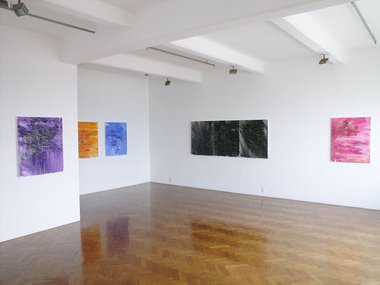
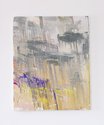


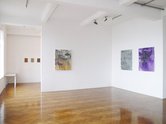
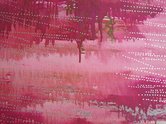
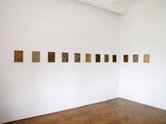


 Two Rooms presents a program of residencies and projects
Two Rooms presents a program of residencies and projects Advertising in this column
Advertising in this column



This Discussion has 0 comments.
Comment
Participate
Register to Participate.
Sign in
Sign in to an existing account.